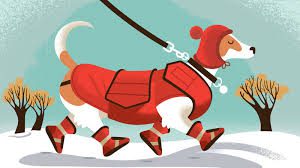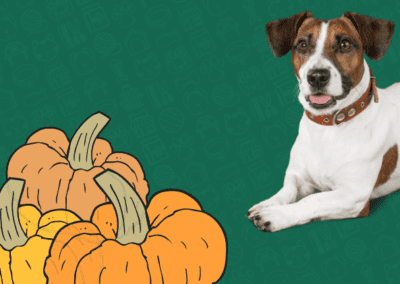
written by Patrick Schiek
The New Year is here and the Holidays are behind us. The days are thankfully getting longer, and while you wouldn’t know it from the lack of snow we have (or don’t have) on the ground, we are officially in Winter.
Winter can be a fantastic time to spend some time outdoors with your four legged BFF. At Lucky Dogs we get a lot of questions about coats, sweaters, boots, and other products to make the winter easier on our dogs. I thought I’d touch on a few of the most common topics.
First – here is just a sample of some of the breeds that do well or actually thrive in the winter.
| BREEDS THAT DO WELL IN WINTER | |||
| Akita | Alaskan Malamute | Anatolian Shepherd | Australian Shepherd |
| Belgian Malinois | Bernese Mountain Dog | Chow Chow | Cocker Spaniel |
| German Shepherd | Golden Retriever | Great Pyrenees | Labrador retriever |
| Leonburger | Newfoundland | Poodle \ Doodle’s | Rottweiler |
| Saint Bernard | Shiba Inu | Siberian Husky |
COATS & SWEATERS
As a general rule of thumb, large dogs with thick, dense coats are well protected from the cold. This includes Northern breeds, like Alaskan Malamutes, Siberian Huskies, Saint Bernard’s, and Bernese Mountain Dogs with fur coats genetically designed to keep them warm. But there are dogs that need to be protected from extreme weather.
- Small, toy, and miniature shorthaired breeds, like Chihuahuas and French Bulldogs. These small pups can’t easily generate and retain enough body heat to keep themselves warm.
- Dogs that sit low to the ground. Although breeds like Pembroke Welsh Corgis, for example, have thick coats, their bellies sit low enough to the ground to brush against snow and ice.
- Breeds that typically have long hair but are clipped or shorn, like Poodles. Grooming may alter the natural protection of their coats.
- Lean-bodied breeds with short hair, like Greyhounds and Whippets, should also be protected from the cold.
- Senior dogs are prone to conditions that may require a winter coat, such as arthritis or a weakened immune system. Heat regulation may decline with age, making even a thick-coated dog uncomfortable in the cold.
Once you’ve determined that your dog needs a winter coat, look for a coat that protects his neck and belly. It should extend from the base of his neck to his tail, without being so long that it would make bathroom stops problematic. You’ll want a coat that fits snugly without being tight. Clothing should never restrict your dog’s movement. Dog coats with reflective properties are great for early or late walks as they provide added visibility which is an important safety factor.
WHICH COAT IS RIGHT FOR MY DOG?
When choosing a dog coat, it is important to factor in your lifestyle and budget. Identifying key features that you would benefit from is a great starting point. If you are looking for a coat that has lasting durability, reflective properties and perhaps down or polyfill to keep your dog warm then a dog coat such as a puffer coat might be suitable. Other features dog owners look for features such as waterproof, night vision, breathe easy, wick easy or showerproof.
WHAT WEIGHT SHOULD I CHOOSE?
Selecting the weight of your dog coat is based on your personal preference. Depending on where you live, the weather may be a contributing factor to the type of dog coat you choose to purchase. Owners who have dogs with a thick or double coat may be more inclined to choose a lighter weight option. However, if you live in a climate with cold winters, even a little down or polyfill in a coat can provide your dog added warmth and protection.
WHAT SIZE?
Please follow these simple steps as a guide to select the right size coat for your dog.
1. Measure from the base of the neck to the base of the tail
2. Take note of the number in inches as this measurement will match the size to the dog coat sizes available in the range.
3. It is a good idea to measure their girth or the circumference of their chest as well.
4. Check with your local pet boutique if you’re unsure, and discuss taking your dog in to be fitted for their new coat.
If your dog measures between two sizes, it is best to go up to the higher size as many of our dog coats offer adjustability with touch tape closures.
PAWS & PAWTECTION
BOOTS
If your dog spends a lot of time outdoors — whether in summer or winter — investing in dog boots is a good idea. Paws are sensitive to extreme heat, extreme cold, and sharp particles such as ice shards or sticks while hiking. Most pet boutique’s can help you find the right size for your dog. Often a good idea is to take your dog with you to find the right size.
OTHER PAW PROTECTION OPTIONS
Bag balm, pawtection balm, paw soother are other ways to protect and soothe your pets paws. These are completely safe for your pet. Most are made of a combination of the following substances : Organic mango butter, sunflower oil, different waxes such as sunflower and carnauba. Many also include lavender, rosemary, etc… Apply 2-3 times daily. Try to distract your pet for a few minutes to allow it to absorb. A toy with some kibble or frozen substance can help..
A FEW OTHER WINTER TIPS
- Consider buying pet safe ice melt for your sidewalks and driveways. Salt can be especially hard on pets paws. A brand that we particularly like is SafePaw and it comes in 35 pound and 8 pound sizes.
- Hydration is important all year round, but, our furry friends can get dehydrated in the winter. Make sure your pets have access to multiple sources of water. Consider adding some bone broth to your pets food or water. Bone broth is a natural anti-inflammatory which can help our older pets it also has collagens to help hips and joints. Make sure to get the kind of bone broth that has low (or no) sodium and has no onion in it.
Winter with your pet can be so much fun. Get out and enjoy it with them!




